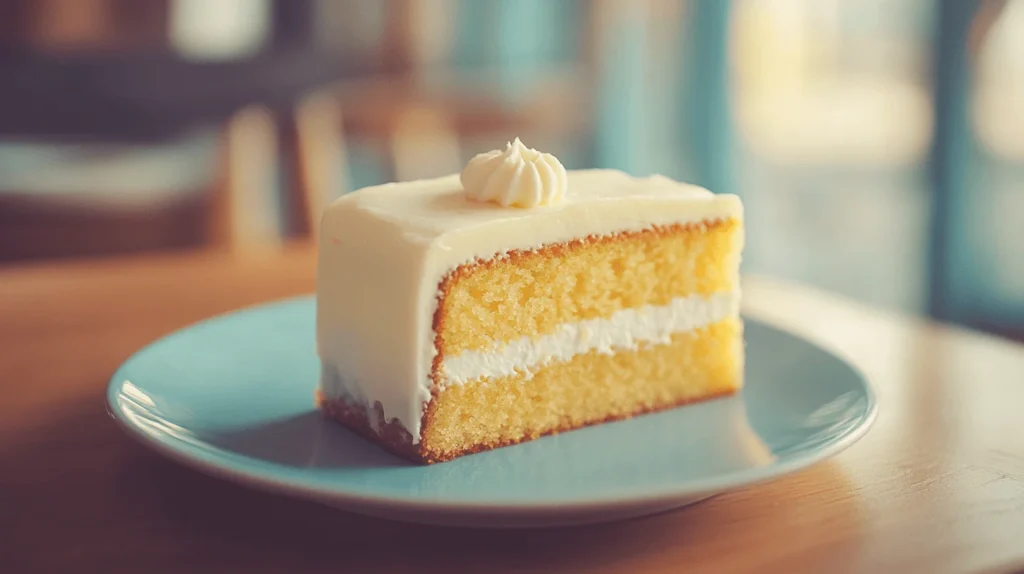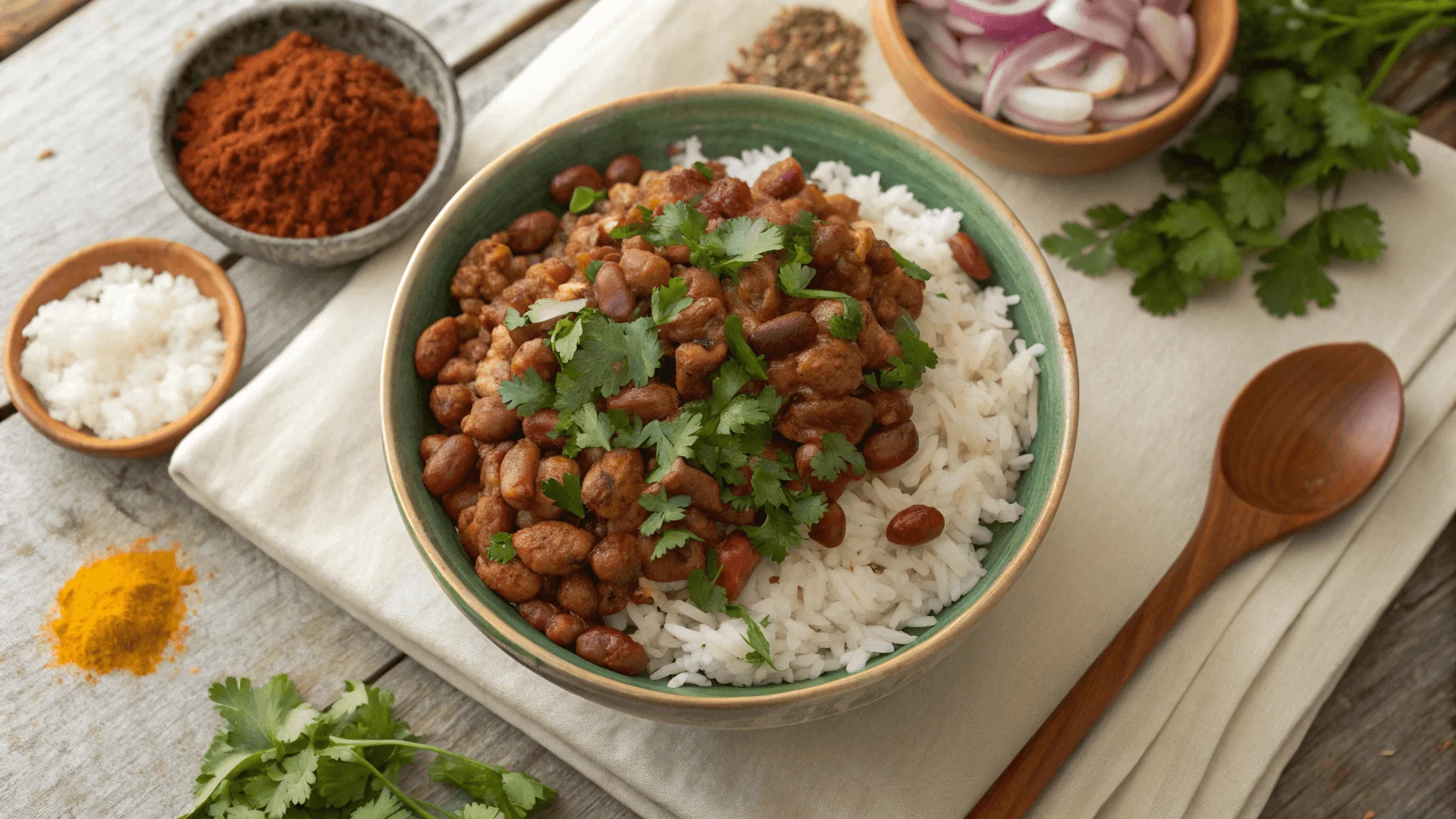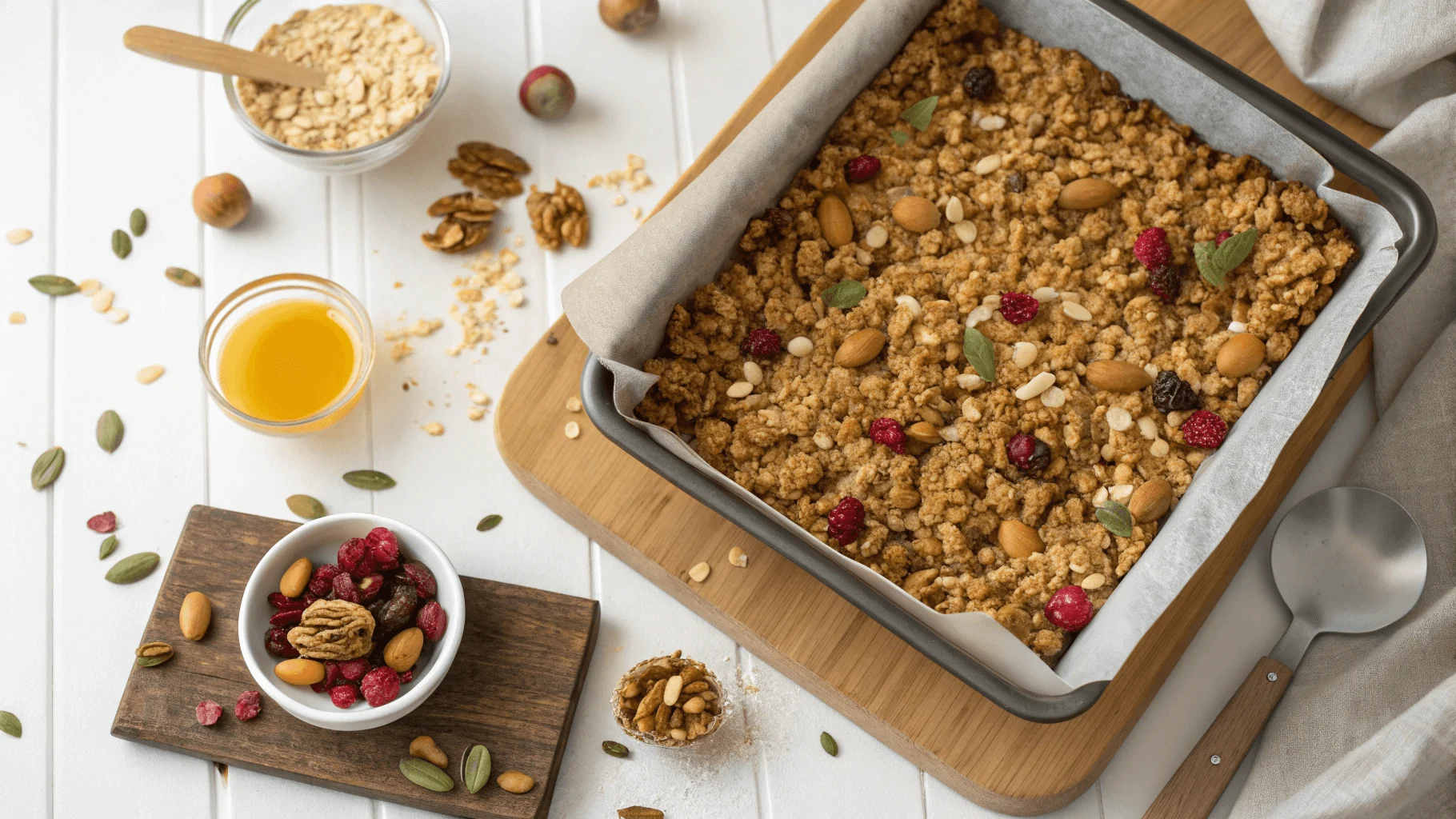The half sheet cake kefir recipe card is an excellent way to combine the benefits of kefir with the sweetness of a classic dessert. Kefir, a fermented dairy product rich in probiotics, brings a unique tanginess and moisture to baked goods, making it the perfect addition to cakes. The kefir half sheet cake recipe allows for a moist, tender crumb that’s full of flavor and offers plenty of room for creativity with variations in flavors, frostings, and add-ins. Whether you’re looking to create a simple, traditional cake or one with a twist, this recipe card will guide you through each step for a delicious and versatile treat. From understanding the right ingredients to learning the best techniques for baking and decorating, this article will help you master the art of making kefir half sheet cake.
The Ingredients for a Perfect Kefir Sheet Cake
Essential Ingredients for Kefir Sheet Cake
To create the perfect kefir sheet cake, you’ll need a few basic ingredients that come together to create a moist and flavorful cake. The star ingredient in this recipe is, of course, kefir, which acts as a natural leavening agent due to its fermentation process. Along with kefir, you’ll need flour, sugar, eggs, butter, and a pinch of salt. You can also add vanilla extract for extra flavor. These ingredients combine to create a cake that’s light and fluffy, with a delightful tang from the kefir. Need tips for ensuring your ingredients blend seamlessly? Check out the guide on making a delicious half sheet cake from scratch.
How Kefir Enhances the Texture of the Cake
Kefir enhances the texture of your sheet cake by providing moisture and a slightly tangy flavor. This fermented dairy product contains beneficial bacteria that react with the other ingredients, improving the cake’s tenderness. The acid in kefir works as a natural tenderizer, resulting in a cake that isn’t overly dense or dry. This is particularly important in sheet cakes, where the texture plays a significant role in creating a delicious dessert. For alternatives to kefir or buttermilk in your recipe, see truth about using kefir instead of buttermilk in cake.
Variations: Choosing Dairy-Free or Gluten-Free Options
One of the best things about the kefir sheet cake recipe is its flexibility. If you’re looking for a dairy-free version, you can substitute dairy-free kefir made from coconut milk or almond milk for regular kefir. For those who need a gluten-free option, simply swap the all-purpose flour with a gluten-free flour blend. Be sure to use a flour blend that is designed for baking to maintain the right texture and consistency. These variations allow you to make a kefir sheet cake that fits a variety of dietary needs while still maintaining that signature moist texture.
Baking the Kefir Sheet Cake
Step-by-Step Instructions for Baking the Cake
Baking the perfect kefir sheet cake is simpler than it sounds. Start by preheating your oven to 350°F (175°C). Grease and line a 9×13-inch baking pan with parchment paper. In a large mixing bowl, whisk together the dry ingredients: flour, baking powder, and salt. In a separate bowl, combine the wet ingredients: kefir, sugar, eggs, melted butter, and vanilla extract. Gradually add the wet ingredients to the dry ingredients, mixing until smooth. Pour the batter into the prepared pan, smoothing the top with a spatula. Bake for 30-35 minutes, or until a toothpick inserted into the center comes out clean. Allow the cake to cool completely before frosting or decorating. For a detailed explanation of baking methods, learn about the right number of cake mixes for a half sheet cake.
Best Baking Temperatures and Times for Perfect Results
Baking your kefir sheet cake at the right temperature is essential for a perfect outcome. The ideal temperature for baking kefir sheet cake is 350°F (175°C). This allows the cake to bake evenly and rise properly. Baking at a lower temperature may result in a dense, undercooked cake, while a higher temperature can cause the cake to brown too quickly on the outside while remaining raw inside. The cake should take between 30 and 35 minutes to bake, but be sure to check it by inserting a toothpick into the center. If it comes out clean, the cake is ready. Let it cool before serving.
Decorating Your Kefir Sheet Cake
Frosting Options: Whipped Cream, Cream Cheese, or Chocolate
Once your kefir sheet cake is baked and cooled, the next step is to choose the perfect frosting. Whipped cream is a light, airy option that complements the tanginess of the cake. For a richer, more indulgent flavor, cream cheese frosting is an excellent choice. It’s smooth, tangy, and pairs wonderfully with the kefir’s natural flavors. Alternatively, chocolate frosting adds a decadent touch, making the cake perfect for chocolate lovers. Whichever frosting you choose, be sure to spread it evenly across the top of the cake for a clean and smooth finish.
Creative Ways to Decorate Your Kefir Cake
When it comes to decorating your kefir sheet cake, the possibilities are endless. You can keep it simple with a dusting of powdered sugar or go all out with colorful sprinkles, edible flowers, or fresh fruit. For a more elegant touch, try piping whipped cream into decorative swirls along the edges of the cake. If you’re feeling adventurous, experiment with a drizzle of fruit compote or a ganache glaze to add an extra layer of flavor and visual appeal. These creative touches will make your kefir sheet cake not only delicious but visually stunning as well.
Kefir Sheet Cake Variations
Fruity Add-ins for a Flavorful Twist
To give your kefir sheet cake an exciting twist, consider adding fresh or dried fruit to the batter. Blueberries, strawberries, and raspberries all work well with the tangy kefir flavor. You can fold the fruit into the batter before baking, or for a more dramatic effect, sprinkle some fruit on top after frosting the cake. This variation adds natural sweetness and a burst of flavor to every bite, making it a refreshing dessert for warmer months. For a tropical flair, consider adding pineapple or mango to the batter.
Exploring Vegan and Sugar-Free Variations
If you’re following a vegan or sugar-free diet, you can still enjoy a delicious kefir sheet cake. To make a vegan kefir sheet cake, substitute the eggs and dairy ingredients with plant-based alternatives. Use flax eggs or chia eggs in place of regular eggs and opt for a non-dairy kefir made from coconut, almond, or soy milk. For a sugar-free version, swap the sugar with a natural sweetener like stevia or monk fruit that works well in baking. These variations will allow you to enjoy a delicious dessert without compromising your dietary preferences.
Troubleshooting Common Problems
What to Do If Your Kefir Sheet Cake Is Too Dense or Too Wet
If your kefir sheet cake turns out too dense, it could be due to too much flour or overmixing the batter. To prevent this, make sure to measure your flour accurately by spooning it into the measuring cup and leveling it off. If your cake is too wet, it may be because there was an excess of liquid or not enough flour. You can fix this by adding a little more flour to the batter. Alternatively, if the cake is too dense, you can try adding a small amount of baking soda to help it rise.
How to Fix Common Baking Mistakes
Baking is an art, and even the most experienced bakers make mistakes. If your kefir sheet cake isn’t rising properly, check that your baking powder is fresh. If the cake is overly dry, it may have been overbaked or had too much flour. To avoid dryness, always check the cake at the minimum baking time and ensure that the batter is evenly spread. For uneven texture, consider mixing the batter more gently to avoid overworking the gluten in the flour.
Nutritional Benefits of Kefir Sheet Cake
The Health Benefits of Kefir in Baking
Kefir is not only a flavorful addition to your half sheet cake, but it also offers several health benefits. As a fermented food, kefir contains probiotics, which are beneficial bacteria that promote a healthy gut. These probiotics can aid in digestion, boost your immune system, and improve overall health. In addition to probiotics, kefir is also a good source of calcium, protein, and B vitamins, which are essential for bone health, muscle function, and energy production.
Why Kefir is a Great Addition to Your Dessert Recipes
Incorporating kefir into your dessert recipes, like a half sheet cake, provides a healthier alternative to traditional ingredients. Not only does it add a tangy flavor, but it also boosts the nutritional profile of your cake. The probiotics in kefir support digestive health, while the vitamins and minerals contribute to overall wellness. Whether you’re looking for a healthier dessert option or simply want to try something new, kefir is an excellent ingredient to include in your baking repertoire, especially when making a half sheet cake.
How to Make Kefir at Home
Step-by-Step Guide for Making Homemade Kefir
Making your own kefir at home is surprisingly easy and can give you a fresh, high-quality product for your sheet cake. Start by purchasing kefir grains, which are small clusters of bacteria and yeast that are used to ferment milk. Place the kefir grains into a clean jar and pour in milk (whole, skim, or non-dairy). Cover the jar with a cloth and leave it at room temperature for 24-48 hours. After this period, strain the kefir to remove the grains and refrigerate the liquid. Your homemade kefir is now ready to use in your kefir sheet cake recipe card.
Tips for Using Homemade Kefir in Your Sheet Cake Recipe
When using homemade kefir in your sheet cake, keep in mind that the texture and flavor may vary slightly depending on the fermentation time. If your kefir is more tangy, you may want to reduce the amount of sugar in the recipe. Homemade kefir can also be thicker than store-bought versions, so you may need to adjust the amount of liquid in the batter to achieve the right consistency. Nevertheless, homemade kefir adds a fresh and authentic taste that enhances the overall flavor of your cake.
Storing Your Kefir Sheet Cake
Best Practices for Storing Leftovers
If you have leftover kefir sheet cake, it’s important to store it properly to maintain its freshness. Place the cake in an airtight container or wrap it tightly in plastic wrap. Be sure to store the cake in the refrigerator, where it will stay fresh for up to 3-4 days. For longer storage, you can freeze the cake for up to 3 months. Simply slice it into individual portions and wrap each slice in plastic wrap before freezing. When you’re ready to enjoy it, simply thaw at room temperature.
How Long Will Kefir Sheet Cake Stay Fresh?
When stored properly in the refrigerator, your kefir sheet cake will stay fresh for about 3-4 days. The kefir helps preserve the moisture in the cake, ensuring it doesn’t dry out quickly. If you’ve frosted the cake, be sure to store it in an airtight container to prevent the frosting from losing its texture. If frozen, the cake can last up to 3 months, making it a convenient dessert to prepare ahead of time.
FAQs
Can You Make a Gluten-Free Version of Kefir Sheet Cake?
Yes, you can make a gluten-free version of kefir sheet cake by using a gluten-free flour blend. Be sure to select a high-quality flour blend designed for baking to achieve the best texture. Additionally, you may need to adjust the liquid content of the recipe slightly, as gluten-free flour can sometimes absorb more moisture than regular flour.
Is Kefir Sheet Cake Suitable for Dairy-Free Diets?
Yes, kefir sheet cake can be made dairy-free by substituting dairy-free kefir for regular kefir. You can find dairy-free kefir options made from almond, coconut, or soy milk, which work perfectly in the recipe. Additionally, swap out the butter for a plant-based alternative, and ensure the frosting is also dairy-free.
What Is the Difference Between Kefir and Yogurt?
While kefir and yogurt are both fermented dairy products, kefir is a drinkable yogurt with a thinner consistency and a higher concentration of probiotics. Kefir is fermented using both bacteria and yeast, which gives it a slightly tangy flavor. Yogurt, on the other hand, is typically made with only bacterial cultures and has a creamier texture.
How Do You Know When the Kefir Sheet Cake Is Done Baking?
The best way to test if your kefir sheet cake is done is by inserting a toothpick into the center of the cake. If it comes out clean or with only a few crumbs attached, the cake is done. You can also gently press on the center of the cake; if it springs back, it’s ready to be removed from the oven.
Conclusion
In conclusion, the half sheet cake kefir recipe card provides a wonderful way to enjoy a healthier dessert that is both delicious and nutritious. By incorporating kefir into your baking, you’re not only adding flavor but also boosting the nutritional value of your dessert. From understanding the essential ingredients to exploring variations, troubleshooting common baking mistakes, and learning how to store leftovers, this guide has everything you need to create a perfect half sheet cake with kefir. Whether you prefer a fruity twist, a vegan option, or a classic version, this versatile recipe will suit all tastes and dietary needs.






3 thoughts on “Perfect Half Sheet Cake Recipe: How To Bake It Right Every Time”